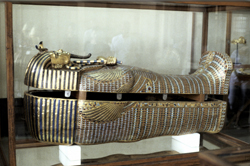Preserving our history through air quality monitoring
Temperature and humidity are routinely monitored and controlled in museums, archives and depositories to protect artefacts from deterioration. However, corrosion is dramatically accelerated by air pollutants, which are often not adequately monitored. The purpose of the EU-funded ʹProtection of cultural heritage by real-time corrosion monitoringʹ (MUSECORR) project was to develop electronic loggers for the continuous measurement of corrosion caused by air. The devices are known as AirCorr corrosion loggers and they allow simple, real-time and reliable monitoring of a number of metals and alloys. Project partners developed AirCorr loggers with four principal parts: an electronic logger, a metal sensor, a communication interface and a software programme for interpretation of the measurements. MUSECORR's AirCorr monitoring system has provided many great advantages. Quick response time, high precision, small size and a wide range of sensors make it incredibly efficient. Its long lifespan and user-friendly software also make it an ideal tool for cultural heritage preservation, clean rooms, protection of electronics, transport and storage, civil engineering, pollution detection and corrosion research. As such, AirCorr technology has the potential to contribute to EU employment, enterprise, protection of the environment and sustainable development. Extensive testing in cultural heritage and industrial environments has also proven that the product is ready for the market.



